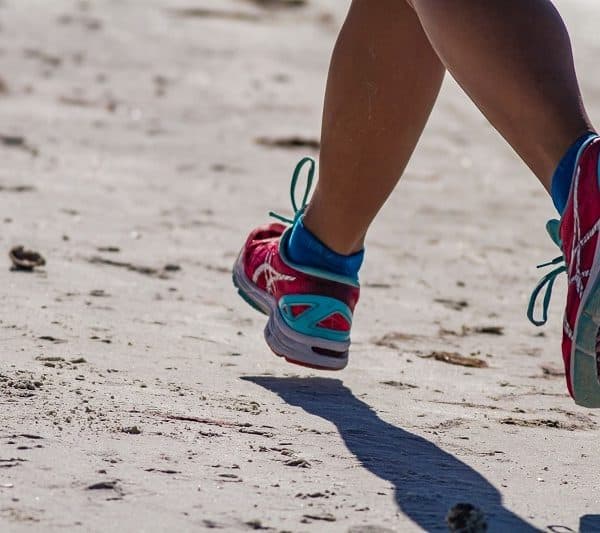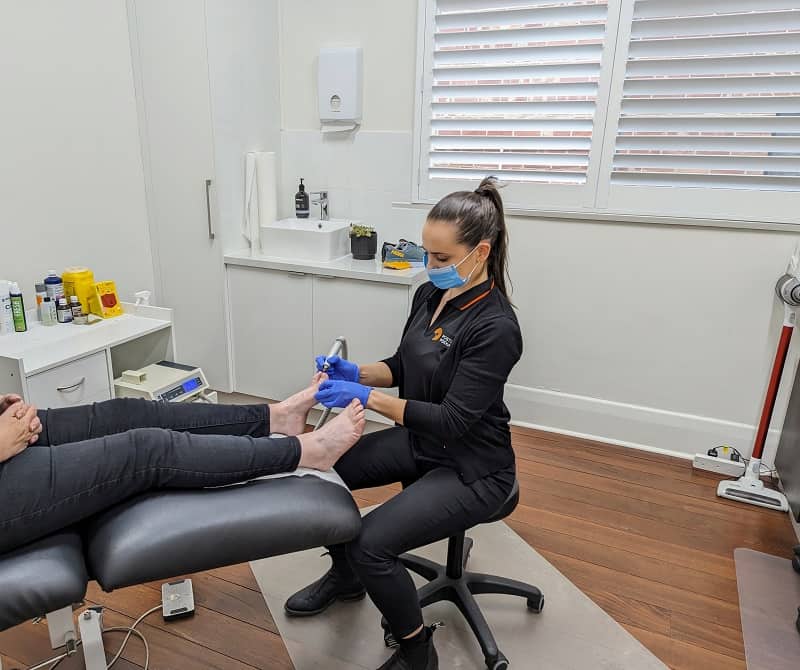Ankle Sprain Explained
How to Manage an Ankle Sprain..
Ankle Sprain vs Ankle Injury
Ankle sprains are the most common type of ankle injury. Ankle injuries are the most common of all sporting injuries, comprising up to 45% of all injuries. It is also considered one of the most common injuries outside of sport. Most people have either experienced or know someone who has experienced an ankle sprain or injury at some stage.
Ankle sprains can be quite debilitating depending on the severity. They can interfere with daily life and general walking. The most common risk factor for an ankle sprain is previous history of an ankle sprain. Hence, it’s imperative that management of an ankle sprain is conducted by an experienced professional who can ensure proper rehabilitation is undertaken. This helps to further ensure any return to sport or daily living can occur with minimal to zero adverse long-term consequences.
Looking for an Adelaide Podiatrist to help treat and prevent ankle sprains?
BOOK ONLINE for an Initial Low or No Gap* Assessment
by experienced Adelaide Podiatrists or
Call 8362 5900 to schedule an appointment to suit
What is an Ankle Sprain?
An ankle sprain occurs when the ligaments of the ankle get damaged or overstretched with stress. Ligaments are the structures that connect bones and provide stability and strength to the joints. The ligaments itself can be damaged, or in severe ankle sprains the ligaments can pull fragments of bone with it causing an avulsion fracture. Ankle sprains can vary in severity from a mild “twisted ankle” or “rolled ankle” to severe complete ligament ruptures, avulsion fractures or broken bones.
How does an Ankle Sprain happen?
Most ankle sprains occur on the outside of the foot. For this type of sprain to occur, stress is placed on a foot that is rolled outwards. This is also known as an inversion ankle sprain because the foot is in a medically described inverted position (supinated) when the injury occurs. The extreme force causes damage to the outside (lateral) ligament structures.
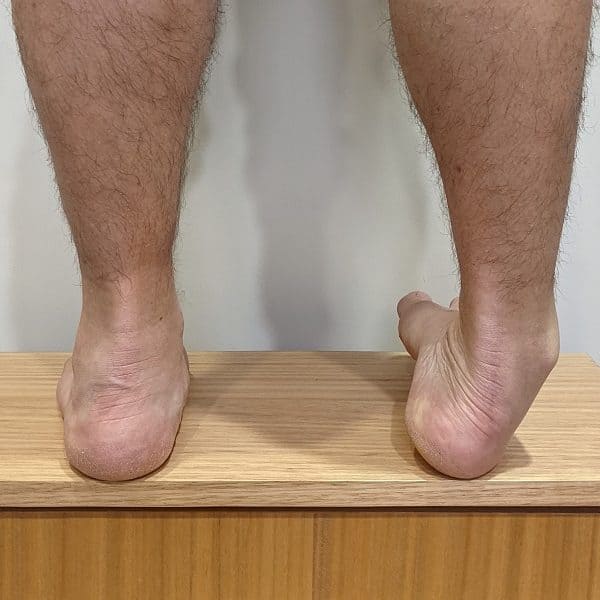
This type of movement at the ankle typically occurs in sports such as netball, football, basketball, soccer and tennis, where the player is constantly changing direction. If the movement is too extreme, or the foot gives way, an ankle sprain can occur.
Other mechanisms can also cause this extreme rolled out (inversion) movement such as walking on uneven terrain, tripping over, walking into a divot or stepping onto another person’s foot.
What are the symptoms of an Ankle Sprain?
A sprained ankle can be very painful. Other symptoms include:
- Bruising
- Swelling
- Tenderness to touch or mobilise
- Instability of the ankle
Looking for an Adelaide Podiatrist to help treat and prevent ankle sprains?
BOOK ONLINE for an Initial Low or No Gap* Assessment
by experienced Adelaide Podiatrists or
Call 8362 5900 to schedule an appointment to suit
How severe can ankle injuries be?
From assessing the ligaments damaged through objective measures and imaging, we can grade ankle sprains from 1-3 depending on the severity. If your sprain does require imaging, it is normally an ultrasound, but sometimes requires both an x-ray and ultrasound.
Grade 1 – A grade 1 sprain occurs when there is slight tearing of the ligament. Mild swelling, tenderness and stiffness occurs. This type of sprain is what most people would call a “rolled ankle.” Return to activities can occur in the shortest time frame.
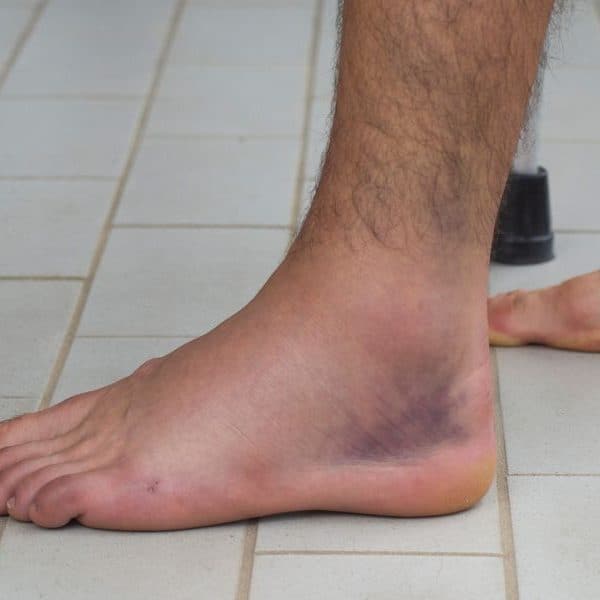
Grade 2 – A grade 2 sprain is a larger but incomplete tear of the ligament. Moderate pain, swelling and stiffness is noted. You might be hobbling or limping on the foot for a few days before the ankle starts to feel better. However, ensuring the ankle is strong and healed is essential before returning to sport.
Grade 3 – A grade 3 sprain is a complete tear, or rupture of the ligament or ligaments. This may or may not involve bony fragments. Severe swelling, pain and bruising will occur. You may not be able to bear weight after this type of injury. A thorough rehab program is required before returning to sport.
What should I do if I sprain my ankle?
We recommend seeing a Podiatrist within the first 48 hours of ankle sprain so the Podiatrist can thoroughly assess the ankle and determine the grade of the sprain. However, there are things you can do at home before your assessment to help with pain.
In the acute phase of an ankle sprain, which is the time from injury until the inflammation starts to settle, RICE is a great way to help the affected area and ease pain. The acute phase generally lasts from 1 – 6 days. RICE is an acronym for:
Rest – This is common sense as to avoid any further injury to the affected structures. Do not walk on it if it is painful.
Ice – Icing the ankle for 20-30 minutes immediately to reduce the oedema. Afterwards you can continue to ice for 10 minutes on and 10 minutes off every few hours as required. DO NOT use heat in the first 3 days
Compression – Compression dressing or bandages further limits the oedema caused by the release of fluids from damaged capillaries into the tissue and stops bruising.
Elevation – Elevation of the affected limb lowers the pressure in the local blood vessels to help limit the bleeding. It also increases the drainage of the excess of fluid.
The next phase of ankle sprain is the sub-acute phase. This is when the body shifts from inflammation to the proliferative stage which is characterised by new collagen and capillary formation. This phase generally starts around days 4 – 15.
Looking for an Adelaide Podiatrist to help treat and prevent ankle sprains?
BOOK ONLINE for an Initial Low or No Gap* Assessment
by experienced Adelaide Podiatrists or
Call 8362 5900 to schedule an appointment to suit
What exercises will I need to do?
In the sub-acute phase, the prime focus is functional rehabilitation with therapeutic exercises that our Podiatrists can assist you with. These exercises will help build strength through the ankle and the affected ligament and will regain the stability needed to get you back to activities or sport. This phase is the most important part of the process.
If we don’t properly rehabilitate the damaged ligament, then you are much more likely to have another ankle sprain. Subsequent ankle sprains will likely result in a worse grade, meaning more pain and more time out of sport or activities. Actively rehabilitating the ligament and ankle is crucial for long term recovery and confidence.
The therapeutic exercises will help to restore the:
- Range of Motion
- Strength
- Sensorimotor functions
Range of Motion
Range of motion must be regained before functional rehabilitation is initiated.
Mobilisation
After an ankle sprain the talus and fibula can become restricted, contributing to a reduction in ankle range of motion. Through mobilisation and releasing through muscles, we can improve the ankle range of motion.
Active but gentle ankle range of motion exercises can be initiated when pain tolerance will allow. This will help to keep the ankle moving and prevent it from becoming further restricted. Suggested exercises are the alphabet, using your ankle as a pen and drawing the alphabet. This simple exercise takes the ankle through all the ranges of motion and shouldn’t be too painful as it is non-weight bearing.
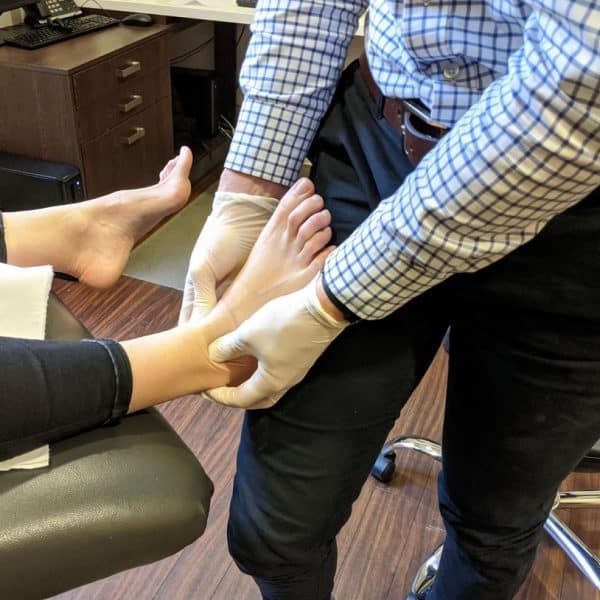
Stretching of the calf muscles should be initiated within 48 – 72 hours post injury. If weight bearing is an issue, you can do a seated calf stretch. It has been found that the achilles tendon has a tendency to contract after trauma. Stretching can help to reduce this contraction.
Looking for an Adelaide Podiatrist to help treat and prevent ankle sprains?
BOOK ONLINE for an Initial Low or No Gap* Assessment
by experienced Adelaide Podiatrists or
Call 8362 5900 to schedule an appointment to suit
Strengthening Exercises
Normally, we will begin with isometric exercises performed against an immovable object going through the four movements of the ankle: dorsiflexion, plantarflexion, inversion and eversion.
Progression is then made to dynamic resistance exercises, performing similar movements but this time against resistance using various objects and/or rubber resistance bands. Other exercises may involve toe walking, heel walking, toe curls and toe raises to regain strength and coordination.
Proprioceptive and Balance Training
Proprioceptive balance training can be initiated once full weight bearing without pain can be achieved. This training helps with the recovery of balance and postural control. The simplest device to use is a wobble board, which can be progressed using varied visual input and support conditions. Lack of variability in speed and intensity is a common mistake when performing proprioception and balance exercises. This variability can also be achieved through walking on varied surfaces, such as hard floors, uneven carpet, stairs and even the use of foam cushions.
Return to Activity Specific Training
When walking is no longer limited by pain, we can progress to:
- Functional exercises on varied surfaces e.g. catching or hitting a ball
- 50% walking and 50% jogging forwards, backwards and in patterns. With progression towards 100% running.
When can I return to sport?
Your podiatrist can assess whether you are able to return to sport through a series of functional tests. A passing grade is seen as the injured limb performing at least 80% of the non injured leg.
Pain, swelling and joint range of motion are not reliable indicators of returning to sport. The limb needs to be functional, and that may not occur even if pain and swelling is reduced and joint range of motion improved.
How Can Ankle Sprains Be Prevented?
Proper rehabilitation is crucial to avoid future ankle injury. This involves:
- Appropriate management following the injury
- Restoration of normal joint range of motion
- Restoration of normal function and strength
- Functional orthotic control to help address unstable foot mechanics. Hypermobile feet and high arched feet with a rigid forefoot valgus can be a major contributor to ankle instability. Sometimes orthotic supports are utilised to improve stability and prevent excessive rolling of the foot and ankle.
Looking for an Adelaide Podiatrist to help treat and prevent ankle sprains?
BOOK ONLINE for an Initial Low or No Gap* Assessment
by experienced Adelaide Podiatrists or
Call 8362 5900 to schedule an appointment to suit


